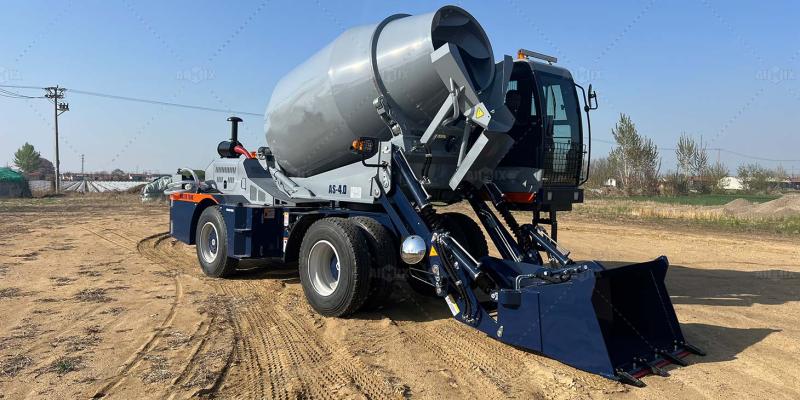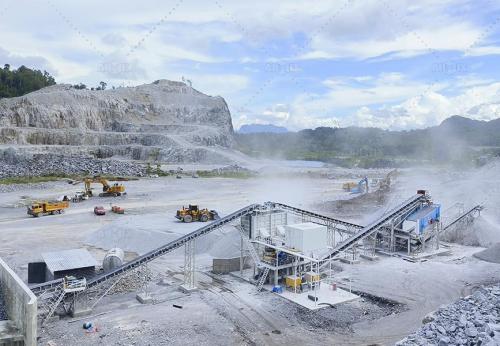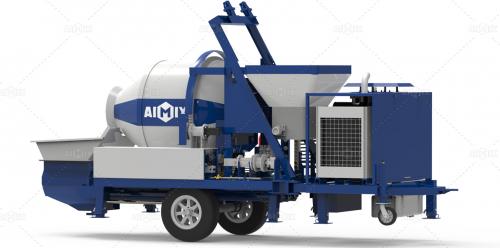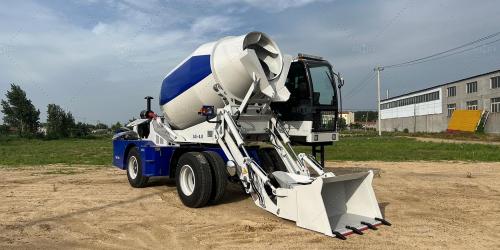What type of pumps are used for concrete?

Concrete pumping stands as a cornerstone in construction endeavors, offering a streamlined approach to concrete placement. As projects grow in scale and complexity, the role of pumps becomes increasingly pivotal, ensuring the timely delivery of concrete to desired locations with precision and efficiency. In this section, we underscore the significance of pumps in concrete construction while providing an overview of the different types employed in the industry.
Concrete pumps serve as the arteries of modern construction, facilitating the seamless flow of concrete from its source to the intended destination. Their utilization minimizes manual labor, accelerates construction timelines, and enhances overall project efficiency. By eliminating the need for cumbersome methods such as bucketing or crane-and-bucket systems, pumps mitigate logistical challenges and enable access to hard-to-reach areas, thereby optimizing construction operations.
The realm of concrete pumping encompasses a diverse range of pump types, each tailored to specific project requirements and operational nuances. From towering boom pumps to nimble line pumps, the options available cater to an array of construction scenarios. In the subsequent section, we dissect these pump variants, shedding light on their functionalities, advantages, and limitations.
Types of Concrete Pumps
Boom Pumps
Description and functionality
Boom pumps, characterized by their extendable articulating arms, represent a pinnacle of precision and reach in concrete placement. These hydraulic systems enable the seamless maneuvering of concrete to elevated or distant locations with unparalleled accuracy. Equipped with robust pumping mechanisms, boom pumps can deliver large volumes of concrete swiftly and efficiently, making them indispensable assets in high-rise construction and expansive projects requiring precise concrete distribution.

Advantages and limitations
Boom pumps offer several notable advantages, including exceptional reach, rapid concrete placement, and enhanced versatility in navigating complex job sites. Their ability to articulate and extend facilitates access to otherwise inaccessible areas, minimizing the need for additional equipment or manual labor. However, the sheer size and weight of boom pumps can pose logistical challenges, particularly in confined spaces or areas with restricted access. Additionally, their operational complexity may necessitate skilled operators proficient in managing and maintaining these sophisticated systems. View more info here: https://concretemixerwithpump.com/mobile-concrete-mixer-pump/.
Trailer-Mounted Pumps
Features and operation
Trailer-mounted pumps, as the name suggests, are compact units mounted on trailers for enhanced mobility and maneuverability. These pumps are renowned for their portability, making them ideal for small to medium-scale construction projects or sites with limited space. Despite their compact footprint, trailer-mounted pumps boast robust pumping capabilities, capable of delivering concrete with precision and efficiency. Their ease of transportation and setup renders them indispensable assets for projects requiring frequent relocation or remote access.
Applications and suitability
Trailer-mounted pumps find application across a spectrum of construction projects, ranging from residential developments to infrastructure undertakings. Their agility and versatility make them particularly well-suited for urban environments or sites with spatial constraints, where traditional concrete delivery methods may prove impractical or inefficient. However, while trailer-mounted pumps excel in maneuverability and accessibility, their pumping capacity and reach may be limited compared to larger counterparts such as boom pumps, necessitating careful consideration of project requirements during selection.
Line Pumps
Function and design
Line pumps, also known as stationary or ground pumps, are characterized by their simplicity and compactness. These pumps operate by pumping concrete through a series of pipes or hoses, delivering it directly to the desired location with precision and control. Unlike boom pumps or trailer-mounted pumps, line pumps lack articulating arms or extensive reach, relying instead on the strategic placement of pipes to convey concrete to its destination. Despite their modest size, line pumps offer considerable flexibility and efficiency in concrete placement, making them indispensable tools for a myriad of construction applications.

Benefits and drawbacks
Line pumps offer several distinct advantages, including simplicity of operation, ease of setup, and versatility in navigating confined spaces. Their compact footprint and maneuverability make them ideal for interior or low-clearance projects where larger pumps may struggle to access. However, line pumps are typically limited in reach and pumping capacity compared to their counterparts, necessitating careful planning and coordination to ensure optimal performance. Additionally, the reliance on piping systems may increase the risk of clogging or pressure loss, requiring periodic maintenance and oversight to mitigate potential disruptions to construction activities.
In conclusion, the selection of an appropriate concrete pump is a critical consideration in construction planning, with each pump type offering unique advantages and considerations. By understanding the functionalities, advantages, and limitations of boom pumps, trailer-mounted pumps, and line pumps, construction professionals can make informed decisions to optimize concrete placement and enhance project efficiency. As construction methodologies continue to evolve, the role of concrete pumps remains integral, driving innovation and efficiency in the built environment.










Comments